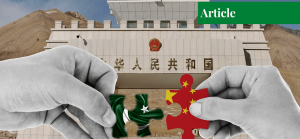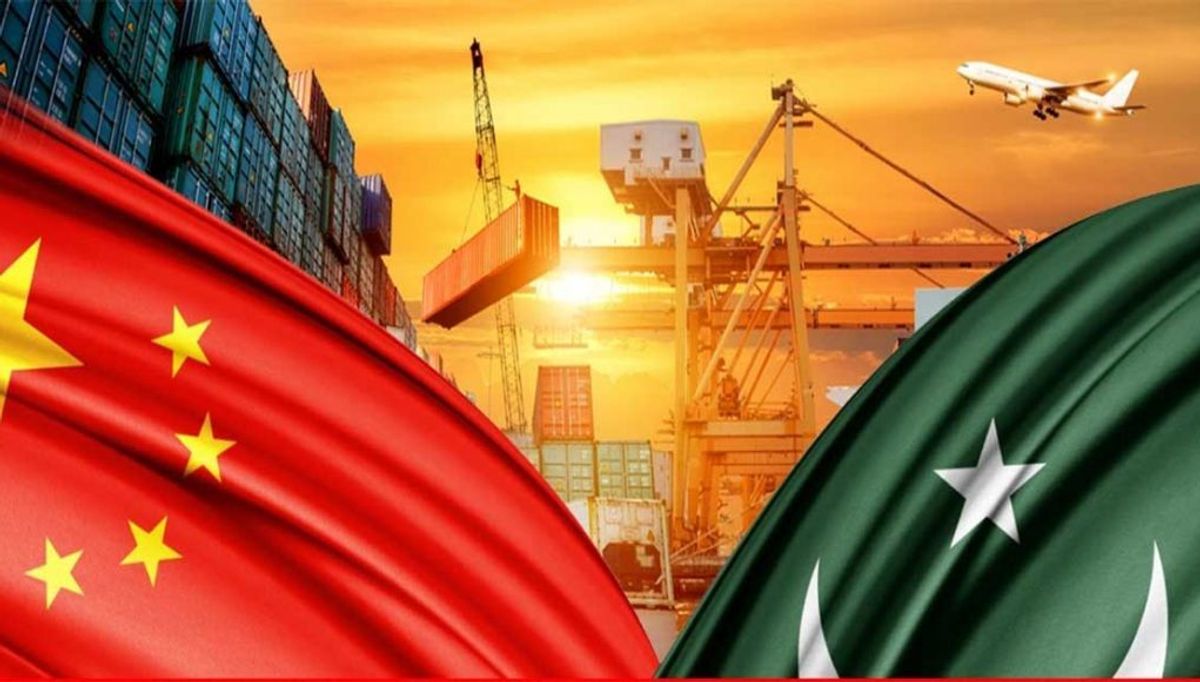CPEC and the
‘Education System’
in Pakistan
It’s a perfectly well-known fact that China-Pakistan Economic Corridor (CPEC) is one branch of above $60 billion for Pakistan from over $6 trillion ‘investment tree’. It’s all due to China’s investment-friendly philosophy. Fortunately, this came as the privileged bounty for Pakistan due to the latter’s geo-strategic location and time-tested Pak-China friendship.
The CPEC has taken the lead in consolidating economic, political and socio-cultural relations between Beijing and Islamabad. It is one of the six economic corridors envisaged in President Xi Jinping’s signature policy of Belt and Road Initiative (BRI), and the one that has been given much more importance after declaring it a flagship project of the BRI.
CPEC is not one-dimensional connectivity; it, in fact, comprises multidimensional connecting nodes. Several projects would remain the main element of connectivity between two diverse, culturally-rich nations. In reality, present government of Pakistan has redefined the scope of CPEC, with the slogan “One Corridor, Many Doors”. Therefore, it is imperative to educate the undergraduate students, graduates scholars and, in fact, schools kids too, on the CPEC project and its implications on a common Pakistani, because this type of massive opportunity for Pakistanis is not in destiny at least in near future.
Throughout history, Pakistan remained an important part of world’s ancient civilizations, i.e. Indus Valley Civilization. Even today, it is having huge stakes in the world’s connectivity phenomenon. Pakistan’s prized strategic location makes it an important organ of the New Silk Road as it was an important appendage of the ancient Silk Road. The idea of CPEC is based on futuristic economic relationship among Asian neighbours and even beyond. It is now an upgraded version that emphasizes on mega-scale connectivity through vibrant corridors of road, railways and maritime linkages.
How do you see CPEC impacting the education system in Pakistan? This questions bothers me a lot. So far, I haven’t heard any significant change regarding the insight of CPEC in any educational institute. Four to five years ago, only a couple of universities from Pakistan had signed MOUs with Chinese universities, and nothing significant outcome (research plan) has been seen even after years. Likewise, nothing has been done for primary/secondary school level where the syllabus needs urgent reform, especially on issues related to the new connectivity phenomenon of today’s globalized world.
Connectivity sensation did not emerge from China’s BRI only, but other countries as well. For example, the United States has worked on a similar project, India and Japan are, too, working on their corridors and Europe also wants its connectivity with Asia. At school level, students are unaware of the significant strategic outcomes which Pakistan could achieve through this multidimensional corridor.
In addition, at societal level in Pakistan and China, there is consciousness problem where educationists and academicians don’t have the known-how of educational technology of each other. Current governments in both countries should adopt their respective national plans to engage with each other to attain higher education standards similar to those of Poland, Sweden, Turkey, Germany, and others, to utilize cost-effective means (such as online education) focusing on the right content with special focus on rural areas because CPEC would be an ideal source of linking various provinces of both the countries.
China is going green and BRI green policies are nowhere talked or discussed in Pakistan. Unfortunately, no university has Chinese experts. The importance of China is still questioned, even from top business schools of Pakistan, like LUMS, due to lack of research and exposure, and their ignorance is frightening regarding the educational collaboration with the Chinese experts.
In this regard, vocational training institutes could provide a platform for economic development in both states as experts from both countries could conduct training, seminars and workshops. Exchange of know-how of different courses such as technician or jobs in trade or in craft could also help in developing SEZs specifically in Pakistan. Therefore, Pakistan’s education policy needs to be collaborative and innovative to accommodate distant learning and e-learning by following high standards and developing good infrastructure and focused facilities.
One appreciation on behalf of the Higher Education Commission (HEC) must be celebrated in the form of ‘CPEC Consortium of Universities’ which was founded in Islamabad in August 2017, and established special schools to promote business-to-business linkages between China and Pakistan. The CPEC Consortium of Universities has vowed to enhance cooperation in the fields of business studies, science and technology for the benefit of the societies of the two countries. As many as 58 universities have joined the consortium.
Another milestone by HEC is the formulation of a full-fledge course at bachelors level (to study China) with the name of ‘BRI and CPEC: Regional Development’, only in the discipline of ‘Social Sciences’. National University of Modern Languages (NUML), Islamabad, has taken the initiative to teach this as a course at bachelor’s and master’s levels. Unfortunately, no other university in Islamabad is offering this course. Currently, when Pakistan is facing several regional and extra-regional challenges in the implementation of the CPEC plans, there is a necessity to take this consortium ahead, and courses like BRI and CPEC to be taught and studied in every discipline and at every Pakistani national university so that better understanding regarding China’s ambitions and CPEC should prevail.
SEZs of any country can give two types of incentives or turnovers to the society; one is statistical and other is multidimensional profit. Statistical turnover is must in sense of profit, revenue generation, etc, while in second, i.e. multidimensional profit, a society learns about skills, innovative ideas, and so on. Similar steps were taken by previous government regarding learning of Chinese language only. I personally met a lot of new language graduates form Chinese universities who are jobless. Although, in past years, different Pakistani universities have opened several Chinese Centers of Excellence for popularizing the learning of the Chinese language only, learning a language without a specific technical skill is futile.
Leading towards the next point, one has to look at Pakistan’s role in global value chains and the larger BRI plan because only then we can understand China’s industrial relocation and the CPEC programmes and plans. Here, it is also important to understand the importance of China Vision 2025. Chinese Prime Minister Li Keqiang launched “Made in China (MIC) 2025,” an ambitious initiative which sets to modernize China’s industrial capability. The four main advantages of MIC 2015 will be: market, enterprises, strategy and talent. Therefore, the aim is to reduce China’s reliance on foreign technology imports and invest heavily in its own innovations in order to create Chinese companies that can compete both domestically and globally. This is the time Pakistan should learn how China is heading towards success by incorporating their educational and industrial sectors.
Chinese education system has the highest OECD ranking (above Europe and other Asian countries). Mathematics and science subjects are very critical for future generations, especially due to the rise of digital economies such as AI, Big Data, robotics, nanotech, etc. The efforts of President of Pakistan, Dr Arif Alvi, deserve praise as he has initiated an online programme for youngsters named ‘Presidential Initiative for Artificial Intelligence & Computing (PIAIC)’ to reshape Pakistan by revolutionizing education, research and business by adopting latest, cutting-edge technologies. The mission of this programme is to make Pakistan a global hub for AI, data science, cloud, etc. Such educational initiatives will be playing a role of economic backbone for Pakistan because these will lead to the boosting of Special Economic Zones (SEZs) of Pakistan and youth will find job opportunities in those.
Conclusively, at a time when some CPEC projects are successfully approaching completion, a smooth transition to its more advanced phases can help Pakistan qualify to a more dignified status in the comity of nations. CPEC can prove to be the ultimate solution for unlocking the region’s true potential, serving as a game-changer. Not only in terms of an improved economy and inter-connectivity, but also, if played wisely, in terms of the region’s politics and security. It holds the promise of propelling Pakistan into playing an increasing prominent role beyond the South Asian region, the implications of which are already becoming evident in short period of time. However, Pakistan has to be cognizant of the numerous challenges and threats that lie along this pathway to a new international club. Here, it is the time to see the world with new eyes as a great saying goes “The real voyage of discovery lies not in seeking new landscapes but in seeing with new eyes.”
The author is a lecturer at Department of IR, NUML, Islamabad. She tweets as: @irsaadia
 Jahangir's World Times First Comprehensive Magazine for students/teachers of competitive exams and general readers as well.
Jahangir's World Times First Comprehensive Magazine for students/teachers of competitive exams and general readers as well.



